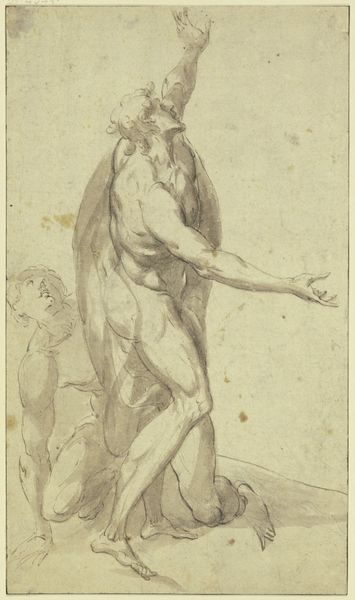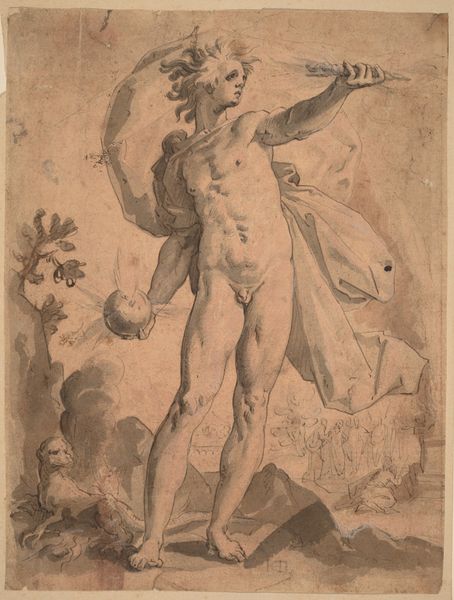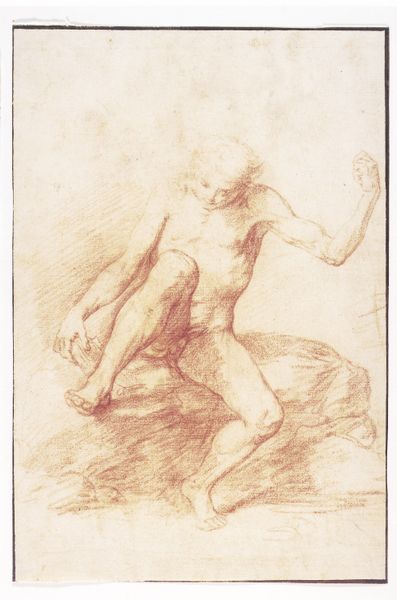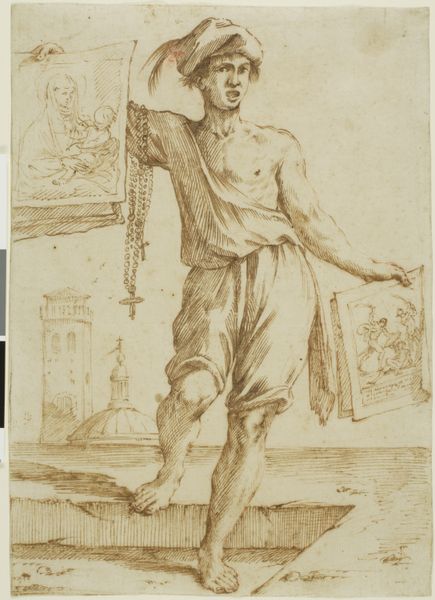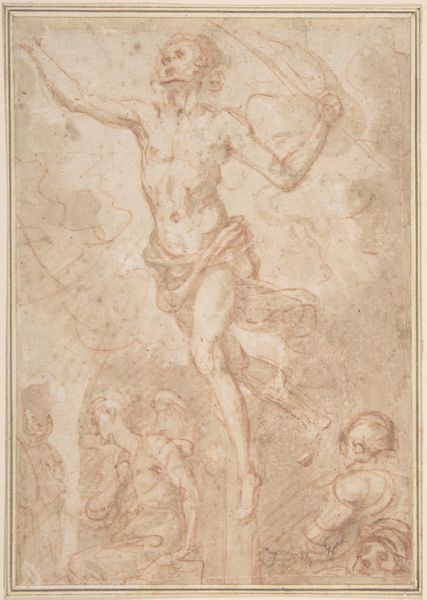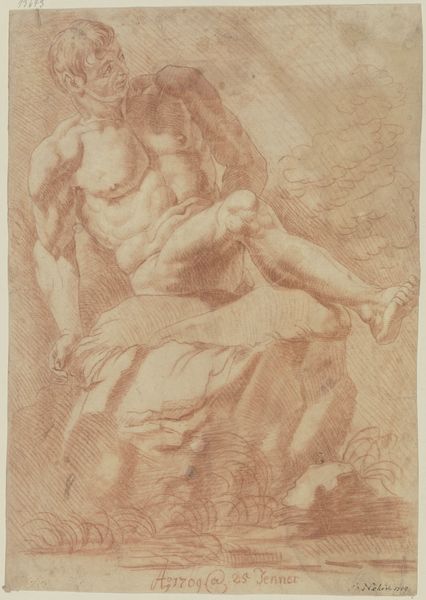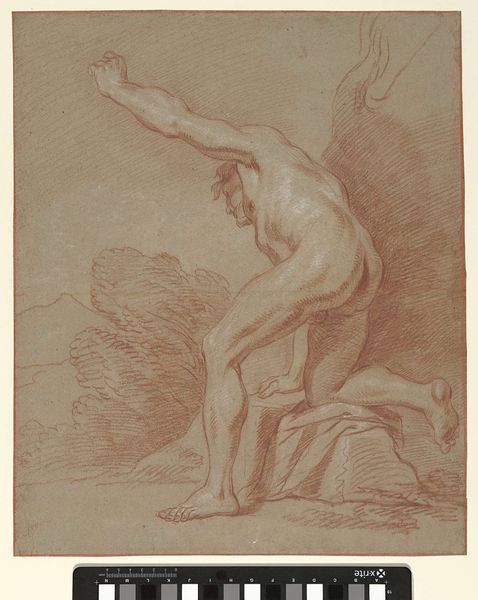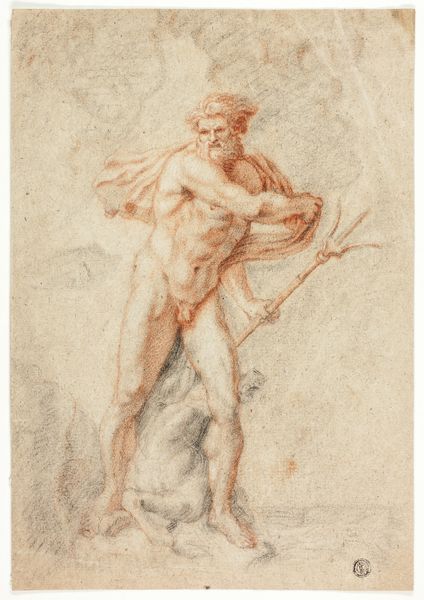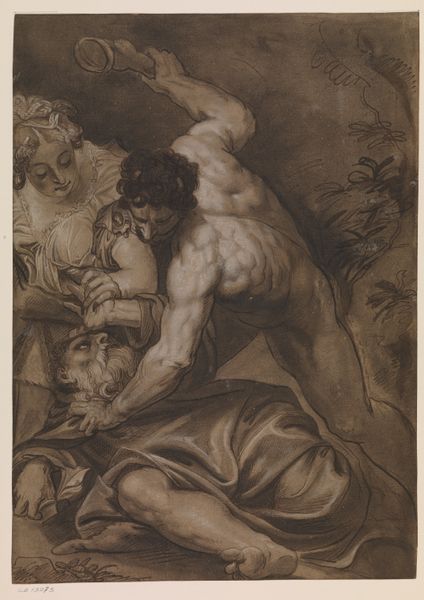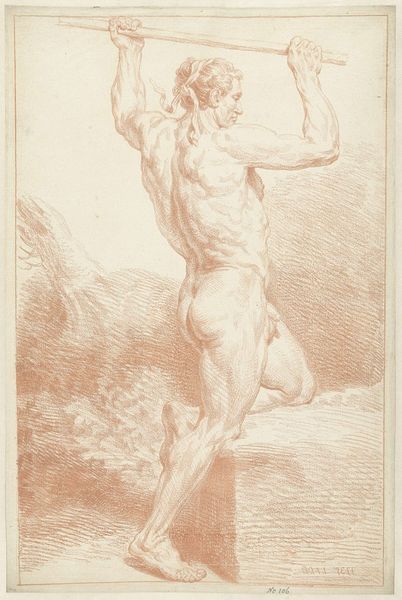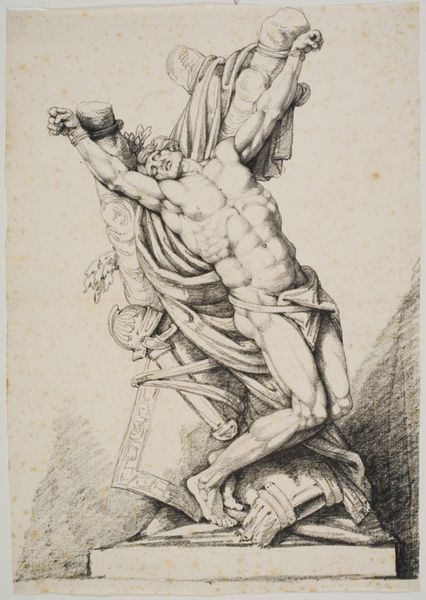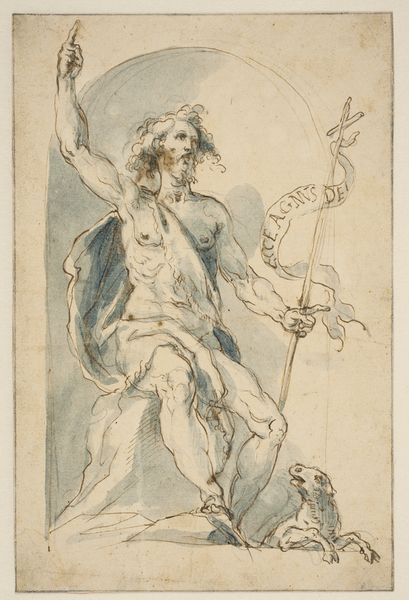
drawing, charcoal
#
portrait
#
drawing
#
baroque
#
charcoal drawing
#
figuration
#
oil painting
#
charcoal
#
history-painting
#
italian-renaissance
Dimensions: 450 mm (height) x 274 mm (width) (bladmaal)
Giuseppe Ghezzi made this red chalk drawing of the crucifixion of Saint Andrew in Italy, sometime around the late 17th or early 18th century. The image depicts a moment of extreme suffering, but also triumph. The figure of St. Andrew looms large, suspended on the X-shaped cross, known as a crux decussata, that has become his attribute. It’s an image designed to inspire awe and reverence, but it’s also a product of its time. Italian art of this period was heavily influenced by the Catholic Church, which used art as a tool to reinforce religious doctrine. The image draws on the power of spectacle to impress on viewers the importance of faith, obedience and the glory of martyrdom. To understand this drawing better, we need to look at the religious and social context in which Ghezzi was working. What role did images play in shaping religious beliefs and practices? How did institutions like the Church influence the production and consumption of art? Historical sources, such as religious tracts and institutional records, can provide valuable insights into these questions, helping us to understand the complex interplay between art, power, and belief in early modern Italy.
Comments
No comments
Be the first to comment and join the conversation on the ultimate creative platform.

